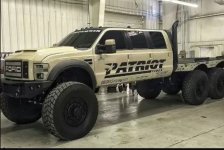No plug wires on a Triton engine, direct coil-on-plug. BUT, the 'boot' between the two is a potential problem. FAR more likely the coil itself. Ford is on something like their 7th Generation epoxy formulation for those coils. Unfortunately, when the coils fail, they have a slim chance of back-feeding secondary (high voltage) voltage back into the computer and frying it. In this case though, it is most likely that one of the coils has failed in the more common way, and is simply not firing properly anymore. Cheap enough fix, but one or two of them are a bitch to get out unless you have a flex-head 7mm ratcheting-wrench because of the placement of the fuel rail and lines.
At the same time, replacing the plugs while you are swapping out a bad coil(s) is a good idea/bad idea... Some years had too many threads on the plugs and they tended to snap off inside the heads during replacement, the other years had too few threads on the plugs and were known for blowing the plugs out and stripping the heads, requiring a Helicoil insert to fix them. Very difficult considering half the engine was crammed underneath the windshield in that truck. So, a lot of owners that might otherwise have maintained their F-150 properly instead ride those plugs into the ground.
...Not that I know anything about Ford engines, mind you.

Not a thing...





